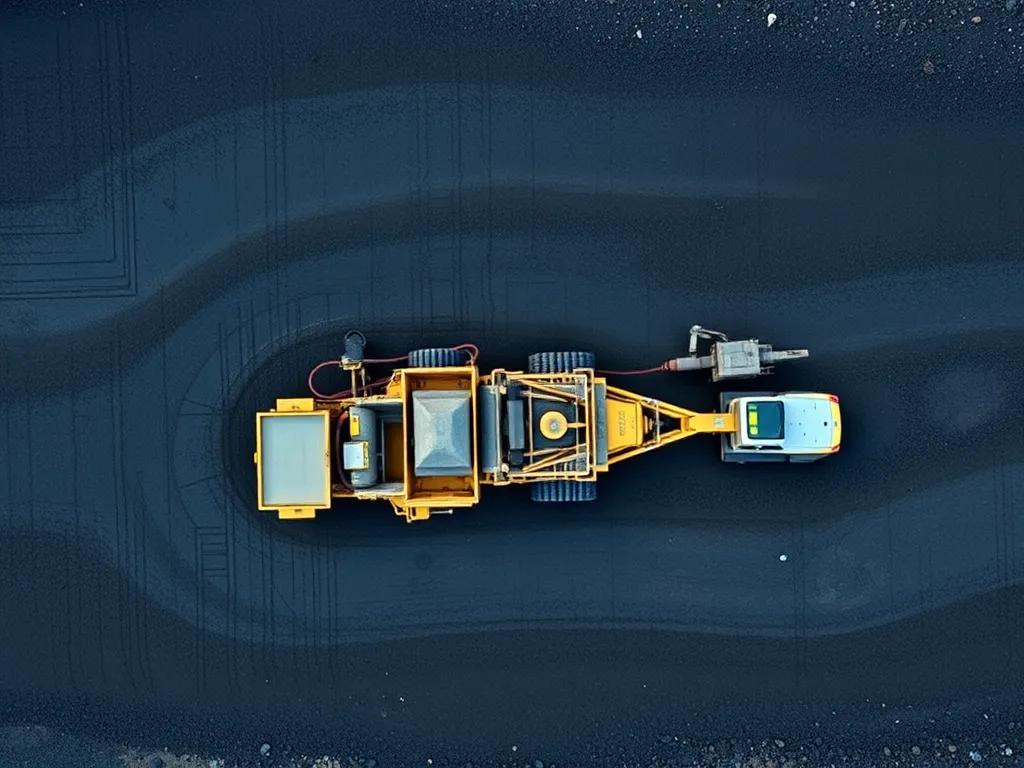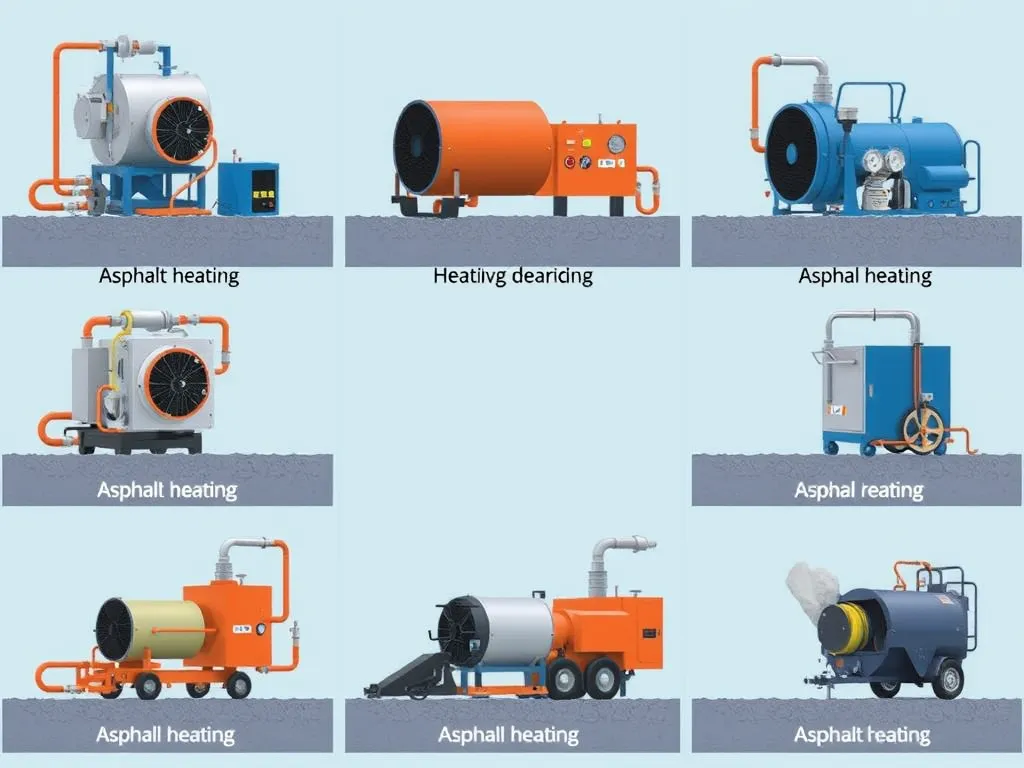Bitumen and Urban Planning: Asphalt’s Role in City Development
Published on: September 17, 2025 | Last Updated: April 14, 2025
Written By: George Voss
Bitumen, a sticky petroleum-based binder, shapes modern cities by binding asphalt mixtures for roads, sidewalks, and waterproofing systems. Urban planners rely on this material for its durability, cost-efficiency, and adaptability to extreme weather. Mixed with aggregates like crushed stone or sand, it forms asphalt concrete—the backbone of urban infrastructure. Recent innovations now integrate recycled asphalt (up to 40% reuse rates) and cool-pavement technologies to combat urban heat islands.
This article explores how bitumen drives smarter city design. Topics include asphalt’s role in road networks, stormwater management through permeable surfaces, and eco-friendly practices like warm-mix asphalt. You’ll learn why cities from Phoenix to Stockholm choose bitumen for heavy-traffic zones, industrial areas, and heat-reduction projects. Data on cost savings, lifespan comparisons (15-30 years for asphalt roads), and safety features like high-skid resistance are covered.
Contents
- Understanding Bitumen in Asphalt Context
- Modern Applications Of Bitumen in Urban Planning
- Why Bitumen Matters in Urban Development
- Bitumen in Asphalt-based Urban Infrastructure
- Benefits Of Asphalt in Urban Planning
- Environmental Considerations
- FAQ: Bitumen and Urban Planning
- Closing Thoughts
- Useful References for You:
Understanding Bitumen in Asphalt Context
Bitumen forms the backbone of modern city infrastructure. This sticky black substance binds asphalt mixtures, creating surfaces that withstand daily wear while adapting to environmental shifts.
What is Bitumen?
Bitumen is a semi-solid hydrocarbon derived from crude oil distillation or natural deposits. With penetration grades ranging from 15 (hard) to 300 (soft), it acts as the glue holding 95% of paved roads worldwide. Modified variants like polymer-bitumen (PMB) enhance crack resistance in freezing zones, while PG binders (Performance-Graded) meet specific temperature thresholds for highway projects.
Bitumen Vs. Asphalt: Key Differences
Bitumen serves as the binding agent, while asphalt combines it with aggregates like crushed stone or sand. A typical road mix contains 5-7% bitumen and 93-95% minerals. This blend allows asphalt to flex under heavy traffic loads without cracking – a critical feature for cities managing 10,000+ vehicles daily per lane. Bitumen’s waterproofing traits also protect road bases from stormwater erosion, cutting maintenance costs by 30-40% over concrete alternatives.
Next, we’ll examine how planners apply these materials to build resilient cities.
Modern Applications Of Bitumen in Urban Planning
Bitumen shapes how cities build and grow. Its use spans roads, roofs, parks, and more. Urban planners pick it for strength, cost, and green options.
Asphalt Road Construction
Over 90% of paved roads use bitumen. Cities rely on it for heavy traffic zones and tight budgets.
Bitumen Concrete Road Mix for Durable Surfaces
Bitumen concrete road mix blends stone, sand, and PG binders (performance-graded). This mix handles 10,000+ daily vehicles. Superpave tech tailors it to local temps, cutting cracks by 40% in freeze-thaw zones. Roads last 15-20 years with less upkeep.
Urban Pavement Mixtures
City streets need smart fixes. Porous asphalt soaks 500 gallons per hour, slashing floods. Quiet pavement mixes drop noise 5 decibels. Warm-mix asphalt cuts paving temps to 250°F, saving fuel and fumes.
Waterproofing Solutions for Infrastructure
Bitumen shields cities from water harm. It’s used under roofs, bridges, and tanks.
Roofing and Reservoir Linings
Modified bitumen roofs last 20 years, triple tar paper’s life. Self-seal layers stop leaks in rain. Polymer-bitumen liners in tanks block seepage, even with pH 3-11 water. Cities save 30% on fixes over 10 years.
Pedestrian and Recreational Spaces
Bitumen isn’t just for cars. Parks, paths, and courts use safer, softer grades.
Bitumen-Based Pathways and Playgrounds
Rubber-bitumen paths give 60% more cushion than concrete. Play zones use colored stone-matrix asphalt for grip and style. Cool pavements with light coats cut surface heat by 12°F, making parks comfy in summer.
These uses show bitumen’s role in city life. Next, we’ll break down why it beats other picks for growth.
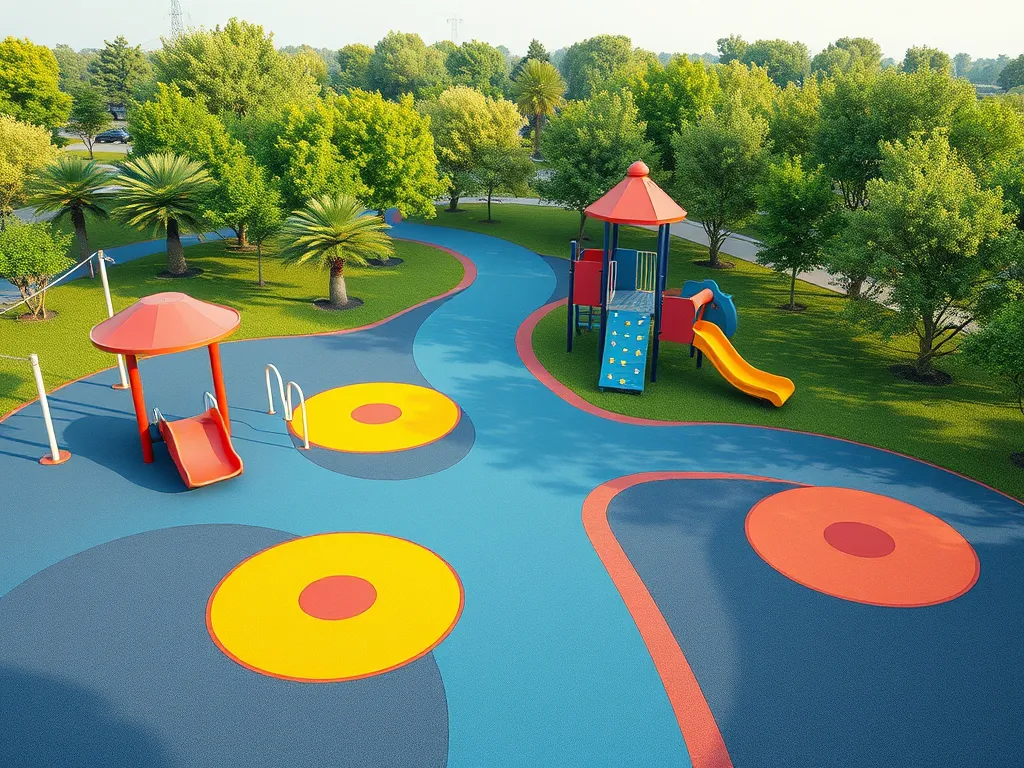
Why Bitumen Matters in Urban Development
Bitumen serves as the backbone of modern cities. Its unique properties enable planners to build infrastructure meeting rising demands while balancing budgets. Let’s explore three core reasons urban projects rely on this material.
Economic Efficiency Of Asphalt Infrastructure
Bitumen cuts project costs by 15-30% compared to concrete. Lower initial spending stems from faster installation—roads constructed from bitumen cure in hours, not days. Maintenance needs drop by up to 40% over 20 years due to bitumen’s self-healing properties. Recycled mixes, like those with 30% reclaimed material, further trim budgets without compromising quality. Cities like Los Angeles save $8M yearly using sustainable bitumen strategies.
Durability for Heavy Urban Traffic
PG 76-22 binders in bitumen concrete road mixes handle 15,000+ vehicles daily. These polymer-modified blends resist rutting under truck loads exceeding 40 tons. Phoenix’s Interstate 10, surfaced with Superpave-designed bitumen, shows less than 3mm deformation after five years of 120°F heat. Such performance ensures roads last 25% longer than non-modified options, reducing rebuild cycles.
Flexibility in Diverse Climate Conditions
Bitumen expands and contracts without cracking across -40°F to 176°F ranges. In Montreal, bitumen mixed with soil for road construction prevents frost heave damage through controlled elasticity. Tropical cities like Miami use porous bitumen mixture for pavement to shed 500mm of yearly rain in minutes. Thermoplastic variants with styrene-butadiene-styrene (SBS) additives maintain flexibility even in -22°F Siberian winters.
These benefits position bitumen as the silent partner in urban evolution. Next, we’ll examine how planners integrate it into highways, drainage systems, and industrial zones.
Also See: High-performance Asphalt Formulations for Durability
Bitumen in Asphalt-based Urban Infrastructure
Bitumen shapes modern cities through adaptable asphalt solutions. Its unique properties enable tailored infrastructure for highways, drainage, and industrial zones.
Road Network Design Principles
Urban road networks require surfaces that balance vehicle loads with climate resilience. Bitumen concrete road mix (BCRM) forms the backbone, combining aggregates with 4-7% bitumen content by weight.
Bitumen Construction Techniques for Highways
Highways use stone matrix asphalt (SMA) with polymer-modified bitumen for rut resistance. Perpetual pavement designs layer PG 64-22 graded binders over crushed stone bases. Geosynthetic-reinforced asphalt extends service life to 25+ years under 10,000+ daily vehicle loads.
| Technique | Bitumen Type | Layer Thickness | Cost/Ton |
|---|---|---|---|
| Hot Mix Asphalt | PG 58-28 | 4″ | $85-$110 |
| Warm Mix Asphalt | SBS-modified | 3.5″ | $95-$125 |
Urban Drainage Systems
Permeable asphalt reduces stormwater runoff by 40-60% compared to concrete. Cities like Copenhagen use bitumen-modified soil layers with 30% void spaces, allowing 200 gallons/day/sq ft water infiltration.
Bitumen-Modified Soil for Permeable Surfaces
Mixing 6-8% bitumen emulsion with sandy soils creates stable yet porous substrates. These surfaces prevent flooding in parking lots while filtering 80% of hydrocarbons from runoff. Maintenance costs drop 35% versus traditional drainage systems.
Industrial Zone Surfacing
Heavy-duty areas demand surfaces resisting 15,000+ psi loads. Industrial asphalt mixes contain 8-10% bitumen with crumb rubber additives, reducing cracking under forklift traffic.
Bituminous Coatings for Heavy-Duty Areas
Epoxy-bitumen composite coatings protect warehouse floors from oil spills and impact. Applied at 0.2″ thickness, they withstand -40°F to 250°F temperatures. Initial costs average $4.50/sq ft with 12-year recoating cycles.
As cities evolve, these bitumen applications create foundations for smarter infrastructure. The next frontier lies in balancing performance with environmental stewardship.
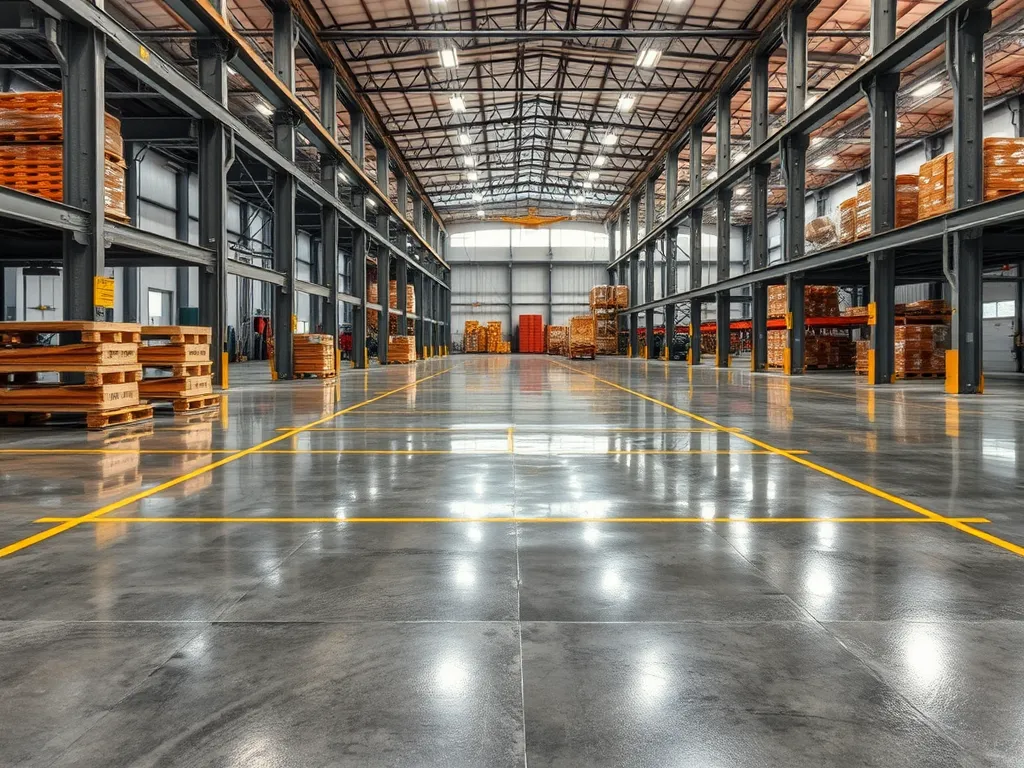
Benefits Of Asphalt in Urban Planning
Asphalt’s dominance in city development stems from bitumen’s unique properties. This sticky hydrocarbon binder enables flexible, long-lasting infrastructure tailored to modern demands.
Cost-effective Material Solutions
Bitumen slashes project budgets by 18-22% compared to concrete. A ton of hot mix asphalt (HMA) averages $70-$100, with recycled asphalt pavement (RAP) cutting costs another 25%. Cities like Los Angeles save $3.2 million annually using 15% RAP in road resurfacing. Permeable asphalt mixtures reduce drainage system expenses by 40%, ideal for flood-prone areas.
Rapid Construction and Maintenance
Full-depth asphalt roads can be laid in 48-hour cycles, minimizing traffic disruptions. Infrared patching fixes potholes in 20 minutes versus 4 hours for concrete. Phoenix, Arizona, rebuilt 100+ lane miles in 10 weeks using warm-mix asphalt (WMA) technologies. Nighttime paving keeps daytime commutes flowing smoothly.
Enhanced Road Safety Features
Polymer-modified bitumen creates surfaces with 55% higher skid resistance than standard mixes. Open-graded friction courses (OGFC) cut wet-weather crashes by 30% through faster water drainage. Noise-reducing asphalt lowers traffic sounds by 3-5 decibels, improving residential zone livability.
These functional perks position asphalt as the backbone of urban mobility. Yet balancing these gains with ecological responsibility remains critical for future-focused planning.
Environmental Considerations
Urban growth demands materials that align with planetary limits. Bitumen’s role now spans beyond traditional infrastructure, tackling modern sustainability challenges head-on.
Recycling Asphalt for Sustainable Practices
Reclaimed Asphalt Pavement (RAP) turns old roads into fresh surfaces. U.S. highways reuse 95% of milled asphalt, slashing material costs by 30%. RAP mixes with virgin bitumen and aggregates, maintaining structural integrity while cutting demand for new resources. Cold recycling methods allow in-place reuse, trimming transport needs by 40%. This circular approach supports asphalt sustainable urban planning goals without sacrificing load-bearing capacity.
Reducing Urban Heat Island Effects
Dark bituminous road surfaces absorb up to 90% of sunlight, boosting city temps by 5-7°F. Cool pavements combat this through reflective coatings or light-colored mixes. Modified bitumen with titanium dioxide or high-albedo aggregates can lower surface temps by 10°F. Phoenix, Arizona, saw a 4°F drop in street temps after applying solar-reflective bitumen mixtures. Such tactics align with bitumen and town planning strategies for climate adaptation.
Emission Management in Bitumen Production
Modern plants cut CO2 output by 20% using warm-mix tech that operates at 50°F lower temps. Bio-based binders from algae or cooking oil trim fossil reliance by 15-25%. Closed-system storage tanks at refineries capture 98% of volatile organic compounds. California’s SB 1 Act mandates 40% recycled content in state-funded projects, pushing innovation in low-impact bitumen construction techniques.
Balancing infrastructure needs with planetary limits shapes tomorrow’s cities. Up next: how safety and adaptability drive material choices in high-traffic zones.
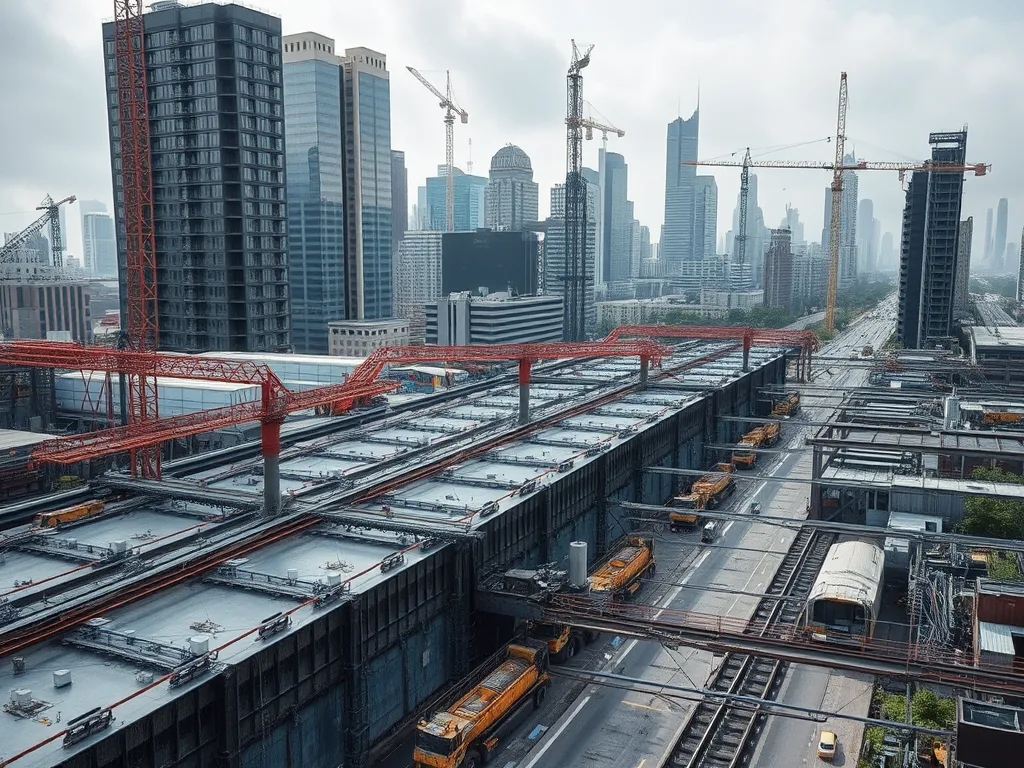
FAQ: Bitumen and Urban Planning
What Are the Primary Uses Of Bitumen in Cities?
Bitumen is primarily used for road construction, waterproofing applications, and recreational spaces. It helps create durable asphalt surfaces for streets, highways, roofs, and playgrounds, and plays a vital role in ensuring urban infrastructure can withstand the stresses of city life.
Why Prefer Asphalt Over Alternative Materials?
Asphalt, which contains bitumen, is preferred due to its cost-effectiveness, rapid construction capabilities, and enhanced durability. Unlike concrete, asphalt can be laid in shorter durations and requires less maintenance, making it an efficient choice for urban planners looking to optimize both time and budget.
How Does Bitumen Contribute to Sustainability in Urban Planning?
Bitumen supports sustainability through practices like recycling asphalt, which greatly reduces waste and resource use. Modern production techniques also focus on lowering emissions and developing eco-friendly mixtures that help combat urban heat and promote more sustainable city designs.
What Innovations Are Emerging in Bitumen Usage for Urban Development?
Innovative technologies such as warm-mix asphalt and high-albedo pavements are being introduced. These not only enhance the performance of asphalt surfaces but also reduce environmental impacts by lowering production temperatures and reflecting more sunlight to combat heat effects.
How Can Cities Manage Urban Heat Island Effects Using Bitumen?
Cities can reduce urban heat islands by implementing cool pavements made with reflective bitumen mixtures. These materials can significantly lower surface temperatures, improving thermal comfort in densely populated areas and contributing to healthier urban environments.
What Role Does Bitumen Play in Urban Drainage Solutions?
Bitumen-modified asphalt can improve urban drainage systems by enabling permeable surfaces that allow rainwater infiltration. This helps to manage stormwater runoff effectively, reducing flooding and pollution while enhancing the city’s resilience to climate challenges.
How Does Bitumen Affect Road Safety in Urban Areas?
Bitumen enhances road safety through its flexible and durable asphalt mixtures that offer better skid resistance compared to other materials. Features like open-graded friction courses can improve water drainage on roads, thereby reducing the risk of accidents during wet conditions.
Closing Thoughts
Bitumen plays a pivotal role in shaping modern urban landscapes. From durable asphalt roads to waterproof infrastructure, its versatility enables cities to thrive. As communities evolve, the reliable use of bitumen ensures that our urban environments remain functional and safe.
Economically, bitumen offers cost-effective solutions, facilitating rapid construction and maintenance of essential infrastructure. Its adaptability to various climate conditions makes it a preferred choice among urban planners. Furthermore, considerations for sustainability are increasingly prominent, with efforts focused on recycling asphalt and managing emissions during production.
For more insights into bitumen’s impact on urban development and to explore tools that can assist you with your asphalt needs, visit Asphalt Calculator USA. Stay informed and engage in the future of urban planning!
Useful References for You:
- National Asphalt Pavement Association (NAPA, Industry Reports & Best Practices)
- Urban planning | Definition, History, Examples, Importance, & Facts | Britannica
- Bitumen Road Construction: Materials, Design, Construction Techniques | Fluidconstructions
- Bitumen – Wikipedia
- Asphalt vs Bitumen | What’s The Difference? | Claremont Asphalt

